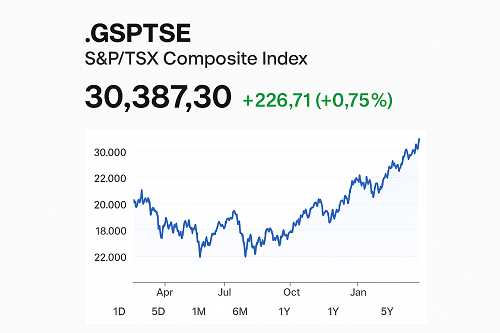A bull market refers to a sustained period of rising asset prices—most commonly in the stock market, but also in real estate, commodities, and cryptocurrencies. It represents widespread optimism, strong investor confidence, and expectations of continued growth.
Typically, analysts classify a bull market as a price increase of 20% or more from recent lows, often accompanied by rising corporate earnings, strong GDP growth, and favorable economic conditions. However, the percentage is less important than the psychological and behavioral trends that drive investor decisions during such periods.
Core Characteristics of a Bull Market
| Characteristic | Description |
|---|---|
| Rising Prices | Broad and sustained increases across major indexes (e.g., S&P 500, Dow Jones, NASDAQ). |
| Strong Economy | Expanding GDP, falling unemployment, and rising consumer spending. |
| Investor Optimism | Confidence and positive sentiment dominate headlines and social media. |
| Increased IPO Activity | Companies rush to list shares amid high valuations. |
| Higher Risk Appetite | Investors move from defensive assets (bonds, cash) to equities and growth sectors. |
| Momentum Buying | Price rallies feed further demand as “fear of missing out” (FOMO) spreads. |
Bull markets can last months or even decades, depending on macroeconomic trends, monetary policy, and innovation cycles.
Historical Bull Markets: Lessons from the Past
The Post–World War II Expansion (1949–1968)
Fueled by industrial growth, suburbanization, and consumer confidence, this era produced one of the longest U.S. bull markets. The Dow Jones Industrial Average rose nearly 500%.
The Dot-Com Boom (1990–2000)
Driven by internet innovation and speculative enthusiasm, tech stocks soared. Although it ended in a crash, it laid the foundation for today’s digital economy.
The Post-Financial-Crisis Bull Market (2009–2020)
One of the most remarkable rallies in history, this bull run followed the 2008 crash. Fueled by near-zero interest rates and quantitative easing, the S&P 500 surged more than 400%.
The 2020–2021 Pandemic Recovery
Despite an unprecedented global shock, rapid fiscal stimulus and technology adoption triggered a rapid rebound across stocks and crypto markets.
Investor Psychology in Bull Markets
Understanding investor psychology is crucial for navigating bull markets successfully. While optimism fuels growth, it can also breed overconfidence and complacency.
1. The Early Stage: Skepticism and Caution
After a major downturn, most investors remain cautious. Value investors and contrarians re-enter first, buying undervalued assets while fear still dominates.
2. The Middle Stage: Confidence and Participation
Economic data strengthens, earnings rise, and the majority of investors return to the market. Momentum grows as media headlines turn positive.
3. The Late Stage: Euphoria and Speculation
Retail participation surges. Valuations stretch. “This time is different” becomes a common refrain. This phase often precedes corrections or the start of a bear market.
Emotional Biases to Watch
- FOMO (Fear of Missing Out) – chasing returns without due diligence.
- Confirmation Bias – ignoring contrary data or bearish warnings.
- Herd Mentality – buying simply because others are doing so.
- Overconfidence – underestimating risk due to recent success.
Recognizing these patterns helps investors stay rational while others succumb to emotion.
How to Identify a Bull Market Early
- Technical Indicators
- Major indexes breaking long-term resistance levels.
- 50-day moving average crossing above the 200-day (Golden Cross).
- Expanding trading volumes confirming trend strength.
- Fundamental Signals
- GDP growth exceeding 2%.
- Rising corporate profits and positive earnings surprises.
- Accommodative central bank policies.
- Sentiment Indicators
- Increasing consumer confidence indices.
- Decreasing volatility (VIX) levels.
- Positive investor sentiment surveys.
Early recognition allows investors to position portfolios strategically before widespread participation inflates valuations.
How to Invest During a Bull Market
1. Stay Invested, but Stay Disciplined
Attempting to “time” the market often leads to missed opportunities. Use dollar-cost averaging (DCA) to accumulate positions steadily.
2. Focus on Growth Sectors
In bull markets, sectors like technology, consumer discretionary, and industrials typically outperform. Avoid overexposure to laggards.
3. Diversify Across Asset Classes
While equities lead, include bonds, REITs, and commodities to manage volatility and preserve balance.
4. Use Trailing Stop-Loss Orders
Protect gains without prematurely exiting positions. Adjust stops as the market advances.
5. Rebalance Regularly
Rapid gains can distort asset allocation. Periodically rebalancing maintains your intended risk profile.
6. Don’t Abandon Fundamentals
Even in strong uptrends, prioritize companies with solid earnings, competitive advantages, and sound management.
Common Mistakes Investors Make in Bull Markets
| Mistake | Impact |
|---|---|
| Over-leveraging positions | Amplifies losses when corrections occur. |
| Ignoring valuations | Leads to poor long-term returns once prices normalize. |
| Chasing speculative stocks | Increases risk exposure and volatility. |
| Failing to take profits | Unrealized gains can evaporate quickly in a downturn. |
A disciplined approach means celebrating profits responsibly and preparing for inevitable pullbacks.
Preparing for the End of a Bull Market
Bull markets don’t end overnight; they transition gradually. Watch for these early warning signs:
- Slowing GDP and declining earnings growth
- Rising inflation and interest rates
- Tightening monetary policy
- Narrowing market breadth (fewer stocks driving gains)
- Increasing volatility and negative news divergence
Prudent investors shift from growth to defensive sectors, raise cash, and strengthen diversification before the trend reverses.
Case Study: How a Smart Investor Navigates a Bull Market
Consider an investor who began buying equities in 2009 during the post-crisis recovery.
- They allocated capital gradually using dollar-cost averaging.
- Maintained diversification across U.S., international, and emerging markets.
- Rebalanced yearly to prevent tech stocks from dominating their portfolio.
- By 2020, even after the pandemic crash, their average annual return remained above 12% — a result of consistency, not speculation.
This illustrates the long-term power of strategy over emotion.
Bull Market vs. Bear Market: A Quick Comparison
| Bull Market | Bear Market | |
|---|---|---|
| Price Trend | Rising (≥ 20%) | Falling (≥ 20%) |
| Investor Sentiment | Optimistic | Fearful or pessimistic |
| Economic Growth | Expanding | Contracting or stagnant |
| Corporate Earnings | Rising | Declining |
| Unemployment | Falling | Rising |
| Best Strategies | Buy and hold, growth investing | Defensive rotation, value focus |
FAQs About Bull Markets
Q: How long does a bull market usually last?
Historically, U.S. bull markets last about 5 to 9 years, though durations vary widely based on economic cycles and policy environments.
Q: Can you lose money in a bull market?
Yes. Individual stocks or sectors can still underperform even when indexes rise. Overpaying for growth or ignoring fundamentals increases risk.
Q: Are crypto and stock bull markets similar?
Both share similar psychology and price momentum, but crypto cycles are shorter and more volatile.
Q: How should retirees invest in a bull market?
Focus on capital preservation and income, gradually locking in gains through diversification and partial profit-taking.
Key Takeaways
- A bull market represents optimism, economic strength, and rising prices.
- Investor psychology—especially managing greed and fear—determines long-term success.
- Staying disciplined, diversified, and data-driven helps capture upside while managing risk.
- Every bull run eventually ends; preparation ensures lasting wealth rather than fleeting gains.
Final Thoughts: The Rational Investor’s Advantage
Bull markets create immense opportunities—but also tempt investors into overconfidence.
Those who remain rational amid enthusiasm and strategic amid volatility will outperform the herd.
The goal isn’t to predict every turn; it’s to build resilient wealth through consistent, intelligent participation.
In every bull run, the winners are those who understand that markets move in cycles—and position themselves to thrive through all of them.





 XAUT-USD
XAUT-USD  AMD
AMD  MARA
MARA  SHOP
SHOP  BULL
BULL  CL=F
CL=F